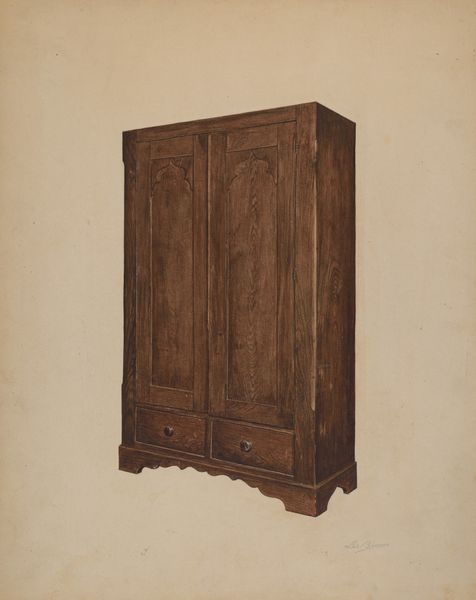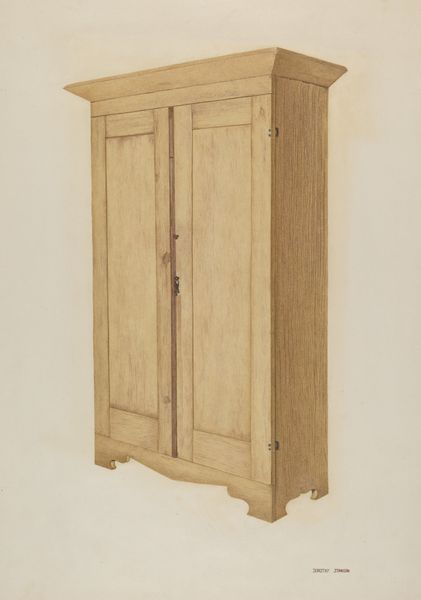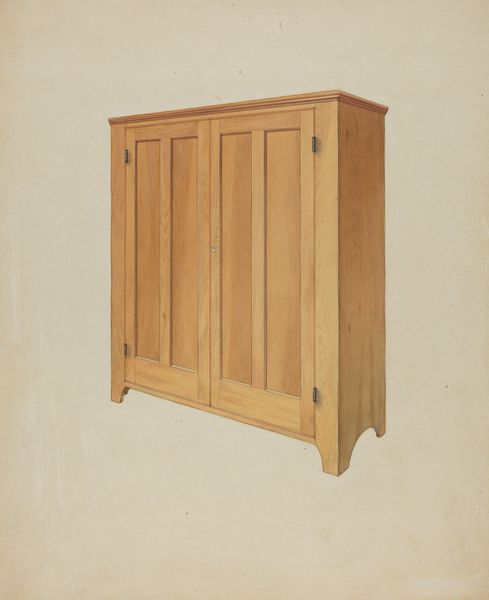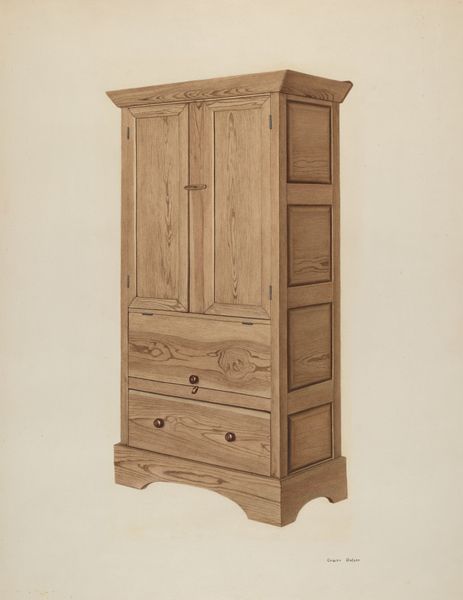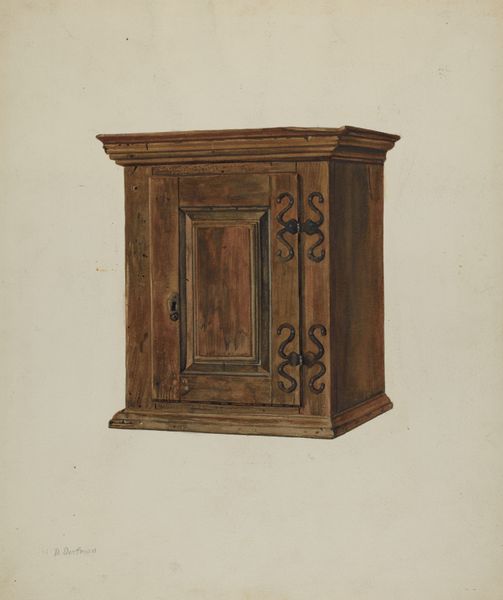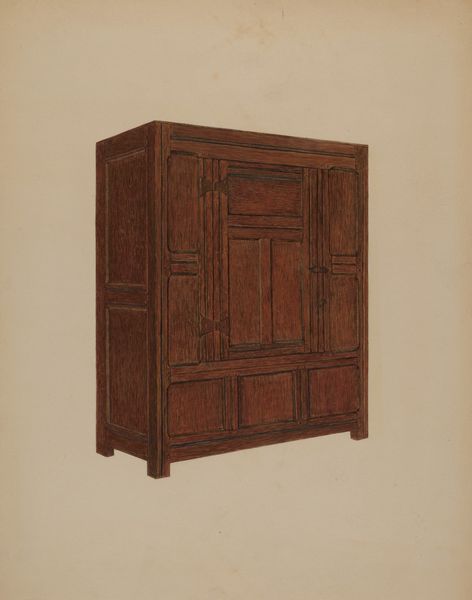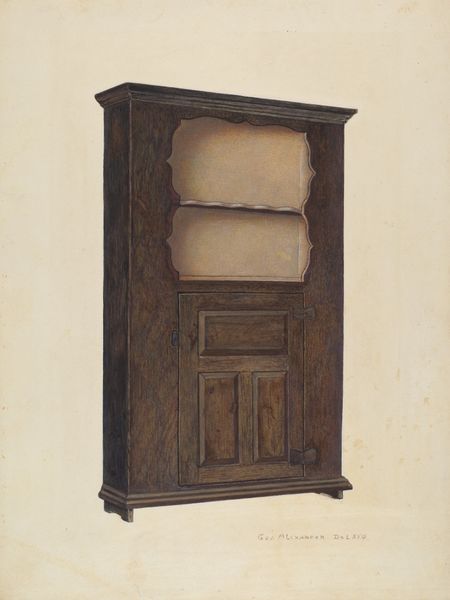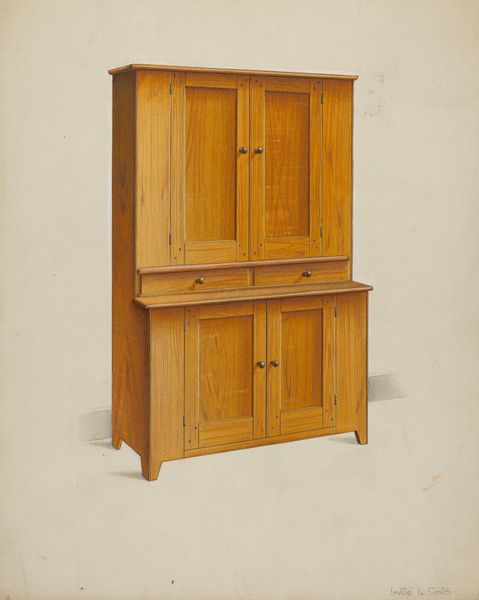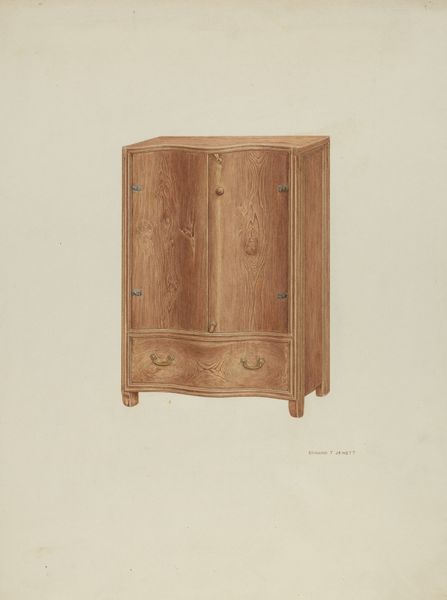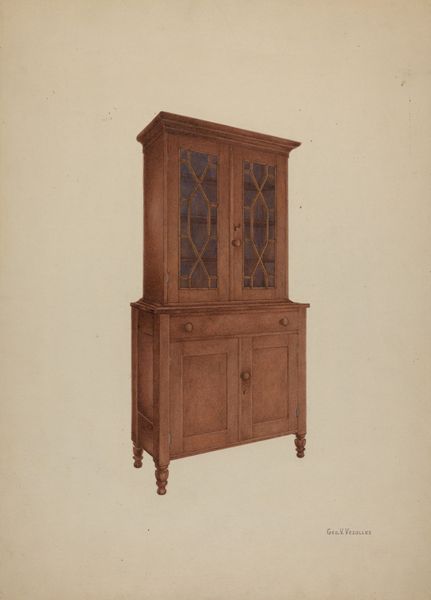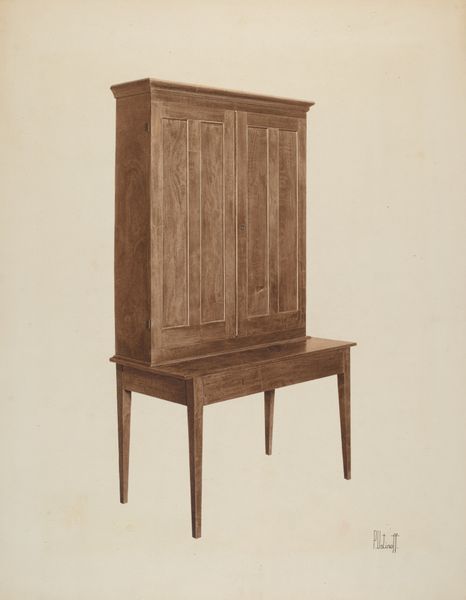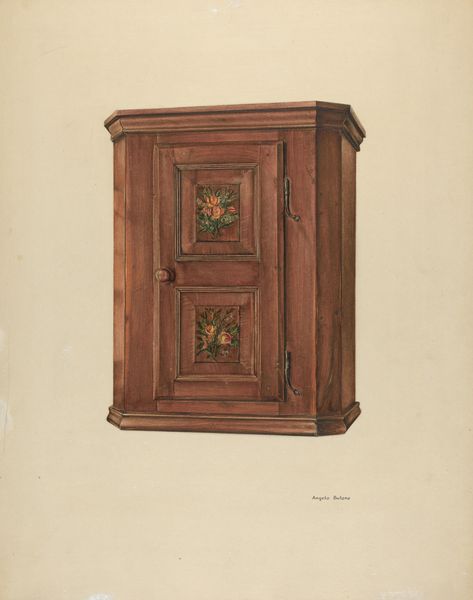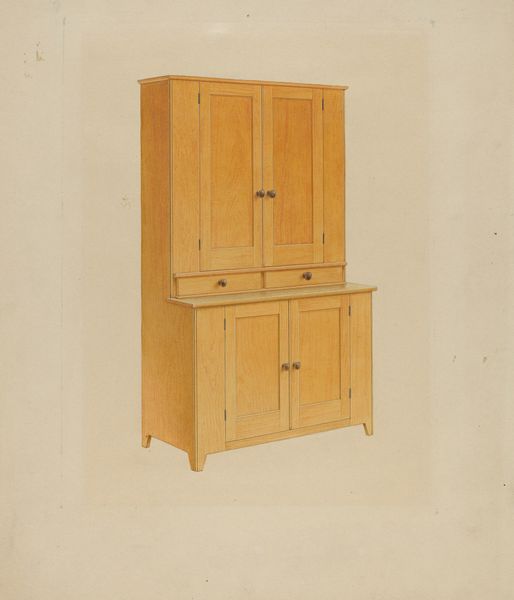
drawing, pencil, wood
#
drawing
#
perspective
#
charcoal drawing
#
pencil
#
wood
#
regionalism
#
watercolor
Dimensions: overall: 45.8 x 35.4 cm (18 1/16 x 13 15/16 in.) Original IAD Object: 7'7"high; 4'8"wide; 1'7 1/2"deep
Copyright: National Gallery of Art: CC0 1.0
Curator: Looking at this "Pine Wardrobe" drawing by Grace Bolser, completed around 1941, the first thing that strikes me is its sheer domesticity. It is an exercise in rendering quotidian objects. Editor: It evokes a strong sense of quietude. I see more than just an item of furniture; I sense a repository of memories. I imagine all that might be stored within. The perspective gives the piece an approachable almost humble presence. Curator: Right, its significance resides in its ordinariness. During the Regionalist movement, artists often turned to humble subjects, elevating the everyday. There’s a deliberate focus on unpretentious Americana here. You almost want to know who owned it. Editor: I'm drawn to the symbolism of the wardrobe itself. It’s more than storage; it’s about concealing, protecting, and preserving. What aspects of culture, community and identity was it charged with safekeeping, especially given the socio-political context of the time? Was it made during the prelude to WWII for example, when anxiety must have prevailed? Curator: Precisely. Examining these artworks reveals how commonplace objects acquired significance in light of war, nationalism, and community resilience. They carry a wealth of information and historical weight far exceeding the item itself. Bolser seems more fascinated with communicating context than showing off with visual flare, don't you think? Editor: It certainly feels understated. There’s also a level of restraint here, a sense of functionality that serves the broader cultural context. The symbolism connects directly with the role it plays in society; safeguarding cherished memories, like holding values that matter to entire communities. Curator: So, on one hand, this unassuming wardrobe gives a quiet look into the daily life of the 1940s. Editor: On the other hand, it mirrors shared cultural memory and the continuous threads that bond us. I would even argue that pieces like these carry more universal truths than artworks explicitly meant for political consumption.
Comments
No comments
Be the first to comment and join the conversation on the ultimate creative platform.

